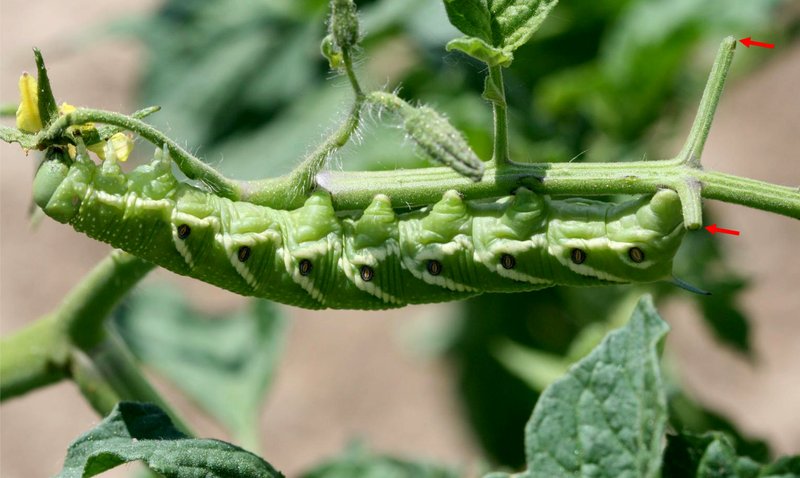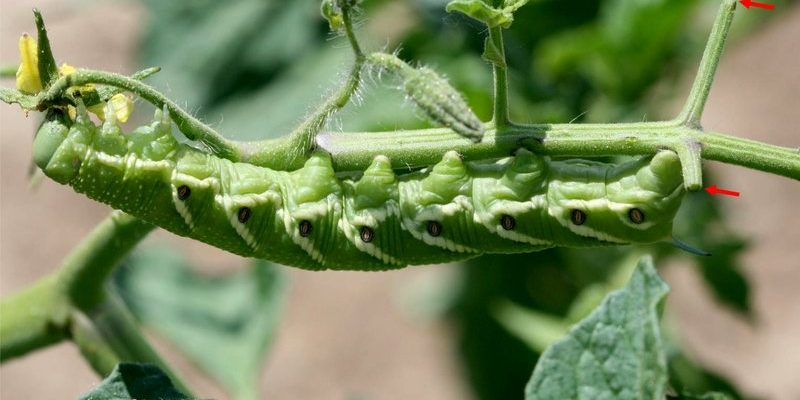
Crop rotation is kind of like changing up your garden’s game plan every season. Instead of planting the same crops in the same spot year after year, you mix it up. Think of it like a team rotation in a sports game; by changing players (or in this case, crops), you can throw off your opponent’s strategy—hornworms, in this case! Let’s dig deeper into why this method is not just a good idea but could be a gardener’s secret weapon against these pesky pests.
What Are Hornworms and Why Should You Care?
Hornworms are the larvae of moths, specifically the *Manduca sexta* and *Manduca quinquemaculata*, which tend to feast on tomatoes, peppers, and eggplants. These caterpillars can grow up to 4 inches long and have a striking appearance with a horn-like protrusion at their rear. If you’ve ever been surprised to find your once-thriving tomato plants suddenly stripped bare, you likely encountered these little green destructors.
You might think, “Hey, they’re just bugs! What’s the big deal?” But here’s the thing: hornworms don’t just nibble—they can devour an entire plant in a matter of days. That’s why it’s crucial to stay ahead of them. Understanding their life cycle and natural behaviors can help you devise a strategy to keep them away from your precious crops.
How Does Crop Rotation Work?
So, what exactly is crop rotation? Simply put, it’s the practice of planting different crops in the same area across seasons. Instead of planting tomatoes in the same spot every year, you might plant beans one year, then switch to peppers the next. This practice disrupts the life cycles of pests like hornworms because they often rely on specific plants to survive.
Think of it like changing your password regularly. If you always use the same one, it’s easy for someone to figure it out. But by changing it, you keep intruders—like those pesky hornworms—guessing. By rotating your crops, you’re effectively making it harder for them to find their favorite food source each year.
Benefits of Crop Rotation for Hornworm Management
The benefits of crop rotation extend beyond simply keeping hornworms at bay. Here are some key reasons why this method is a game-changer:
- Disease Prevention: Certain crops are susceptible to specific diseases. By rotating them, you can help prevent these diseases from building up in the soil.
- Nutrient Management: Different plants have different nutrient needs. Rotating crops allows you to balance nutrients in the soil more effectively.
- Pest Disruption: As we mentioned, pests like hornworms thrive on particular plants. Changing what you plant can disrupt their lifecycle and reduce their numbers over time.
By understanding the benefits of crop rotation, you’re not just protecting your current year’s harvest but also setting up a healthier garden for the future.
Choosing the Right Crop Rotation Plan
Now that you see the value of crop rotation, how do you choose the right plan? The key is to select crops that belong to different families. Here’s a simple strategy you might find helpful:
1. Group Plants by Family: Familiarize yourself with common plant families. For example, tomatoes and peppers are part of the nightshade family, while beans belong to the legume family.
2. Create a Rotation Schedule: Plan to rotate them every year. For instance, if you plant tomatoes this year, consider planting beans next year, and then maybe squash the following year.
3. Monitor Your Garden: Keep an eye on plant health and pest activity. If you notice a surge in hornworms, you might need to adjust your plan.
This thoughtful approach not only helps with hornworms but also contributes to a more vibrant garden ecosystem.
Additional Strategies to Complement Crop Rotation
While crop rotation is a fantastic strategy, it’s not the only tool in your gardening toolbox. Here are some additional measures that can help manage hornworm populations effectively:
- Manual Removal: Sometimes, the simplest solution is the best. Regularly inspect your plants and remove hornworms by hand if you see them.
- Beneficial Insects: Encourage natural predators like wasps or birds that feed on hornworms. They can be a tremendous help in keeping their numbers in check.
- Natural Insecticides: If you’re facing a severe infestation, consider using organic insecticides that target hornworms without harming beneficial insects.
Incorporating these strategies alongside crop rotation can provide a more robust defense against these caterpillar nuisances.
To wrap it all up, crop rotation is a simple yet powerful tool for any gardener looking to keep hornworms at bay. By shifting your planting strategy each season, you’re not only disrupting pests but also nurturing your garden’s overall health. With a little planning and observation, you can enjoy a bountiful harvest free from those green horned foes.
So, the next time you find yourself in the garden, think of crop rotation as your secret weapon. You’ll not only protect your plants but also cultivate a thriving ecosystem, making gardening a lot more enjoyable. Happy gardening!

